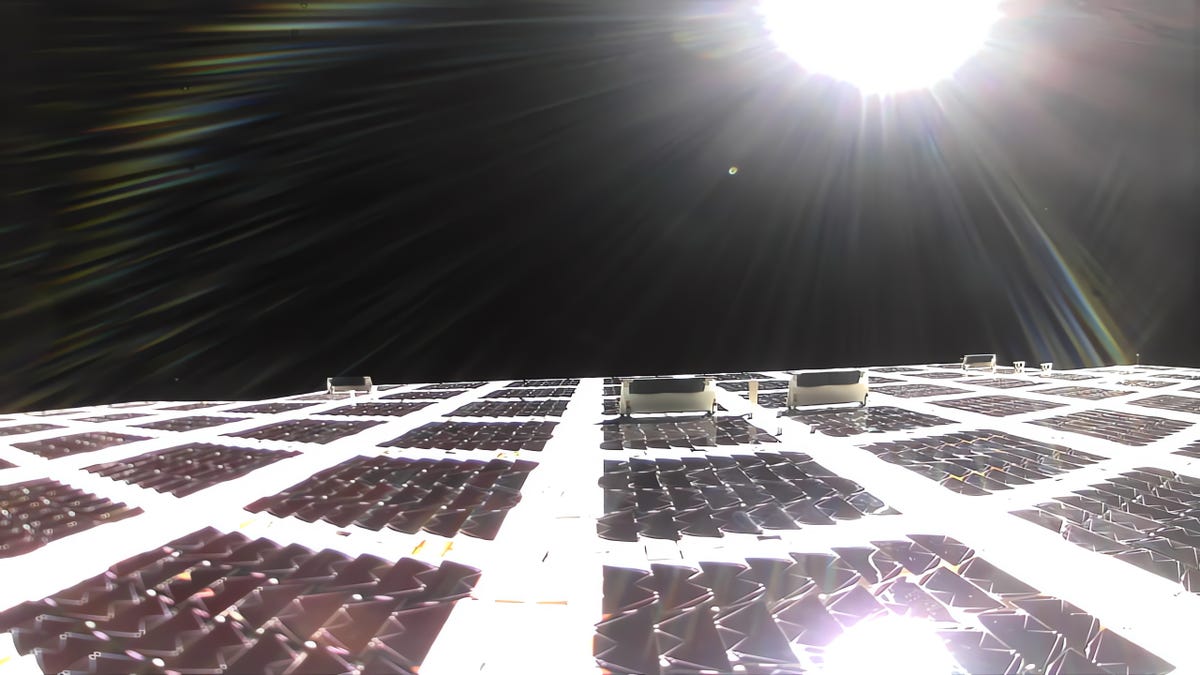Huge 5G Mobile Phone Satellite Unfurls and Outshines Some Stars
The Bluewalker 3 test satellite could be followed by over a 100 "Bluebirds" meant to eliminate mobile dead zones on Earth.

Bluewalker 3 fully deployed in orbit.
Bluewalker 3 is officially in full peacock mode. The satellite has unfurled a first-of-its-kind 693-square-foot array in low Earth orbit, that's designed to provide 5G broadband connectivity direct to mobile devices on the surface, essentially acting as humanity's tallest cell tower.
The array is covered with solar cells on one side that collect energy to power antennas on the opposite side.
The spacecraft is a test satellite operated by Texas-based AST SpaceMobile that was launched on a SpaceX Falcon 9 rocket in September. If all goes according to plan, the company will launch a series of over 100 even larger satellites called Bluebirds.
"Every person should have the right to access cellular broadband, regardless of where they live or work. Our goal is to close the connectivity gaps that negatively impact billions of lives around the world," CEO Abel Avellan said in a statement Monday.
History is unfolding! We've deployed #BlueWalker3's 693-square-foot array, which is now the largest-ever commercial communications array in low Earth orbit.
— AST SpaceMobile (@AST_SpaceMobile) November 14, 2022
Read more about this important milestone here: https://t.co/4kupfxn3vO pic.twitter.com/KnE9CeWOCT
The company says it has "agreements and understandings" with mobile carriers around the world, including Vodafone, Rakuten Mobile, AT&T, Bell Canada, Telefonica, Telstra and several others. The space-based service will offer extended cellular broadband coverage with the goal of eliminating dead zones.
"Particularly in territories where terrain makes it extremely challenging to reach with a traditional ground-based network," said Luke Ibbetson, head of Group R&D for Vodafone and an AST SpaceMobile director.
The satellite is being watched not only by those interested in the nascent potential of space-based 5G, but also by astronomers.
@AST_SpaceMobile's very bright #bluewalker3 passed over our bay area imaging site early this morning at about 5:15 AM local (GMT-8). pic.twitter.com/IhscthdnfN
— Exclosure (@TheExclosure) November 12, 2022
The fully unfolded satellite is bright as some of the brighter stars in the night sky, leaving scientists concerned about what a whole constellation of Bluebirds might mean for preserving dark skies and how they might interfere with astronomical observations. Astronomers have increasingly been sounding alarm bells over the rapid population of low Earth orbit, especially by SpaceX's Starlink, which can get in the way (literally) of scientific observations of deep space.
Astronomer Cees Bassa notes that the satellite will automatically become one of the brightest points of light in the night sky over whatever part of Earth it happens to be passing.
But former NASA astronomer Tony Phillips writes at Spaceweather.com that Bluewalker 3 might not be as big a pest as originally feared, as it appears comparable in brightness to the International Space Station.
"It may be too soon to relax, though," according to Phillips. "Flocks of Bluebirds could ruin a lot of astronomical observations."
To try to spot the big one for yourself by plugging your location in to a tracking site like Heavens Above to see when Bluewalker 3 might be flying overhead.

